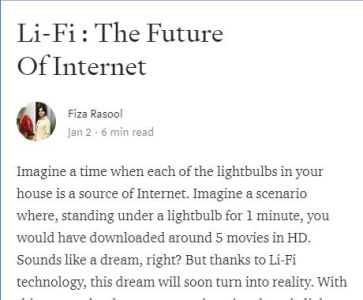Acesse a sua conta getAbstract para obter o resumo!

Acesse a sua conta getAbstract para obter o resumo!
Fiza Rasool
Li-Fi : The Future of Internet
Medium, 2019
Sobre o que é?
A light-based alternative to Wi-Fi might soon lighten the strain on Internet networks.
Recommendation
Imagine you have stopped at a traffic light. While you wait, the red bulb you are staring at sends you information about a traffic incident farther up the street – or data on nearby restaurants or tourist attractions you’ve been wondering about. As technology writer Fiza Rasool explains, the described scenarios aren’t science fiction, but a potential application of a new data transmission technology based on light waves. Whether you consider yourself a techie or not, you’ll find her piece illuminating.
Summary
About the Author
Fiza Rasool is a UK-based IT professional.

















Comment on this summary